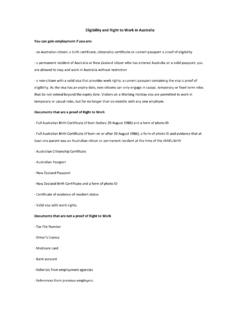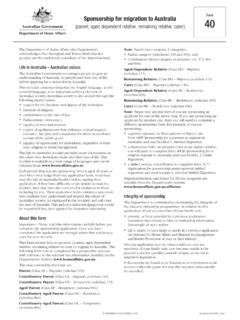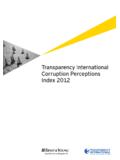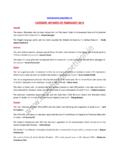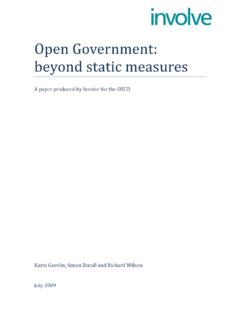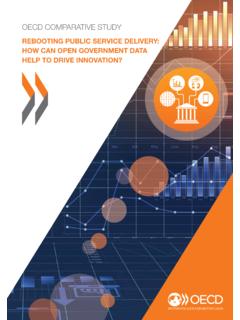Transcription of Australian and New Zealand Information Literacy Framework
1 ISBN 1 920927 00 X. Australian and New Zealand Information Literacy Framework principles, standards and practice Second edition Editor Alan Bundy Adelaide Australian and New Zealand Institute for Information Literacy 2004. Editorial committee Ralph Catts University of New England Mandy Lupton Australian National University Judith Peacock Queensland University of Technology Margaret Appleton and Debbie Orr Central Queensland University Linden Fairbairn University of Sydney Suzanne Lipu University of Wollongong Lesley Ngatai University of New South Wales Helena Zobec Canberra Institute of Technology Rosanne Jatania University of Waikato Theresa Graham University of Canterbury Alan Bundy and Irene Doskatsch University of South Australia Australian and New Zealand Institute for Information Literacy
2 (ANZIIL). and Council of Australian University Librarians (CAUL). The Australian and New Zealand Information Literacy Framework may be freely used, translated, and adapted for noncommercial purposes, subject to acknowledgment of its US and Australasian provenance. A copy of any such usage is requested, to ANZIIL University of South Australia Library, Holbrooks Road, Underdale, South Australia 5032. The Framework may be freely accessed at or packs of bound print copies ordered from Library Publications University of South Australia Holbrooks Road Underdale South Australia 5032. email tel (08) 8302 6299.
3 Fax (08) 8302 6756. Price per pack (5 copies) AUD$35 (includes GST and postage in Australia and New Zealand ). Overseas orders AUD$40 (includes airmail postage). PREPAYMENT IS REQUIRED Visa, Mastercard accepted Contents Preface 1. Overview 3. Statement of principles 11. The Standards and Examples Standard One The Information literate person recognises the need for Information and determines the nature and extent of the Information needed 12. Standard Two The Information literate person finds needed Information effectively and efficiently 14. Standard Three The Information literate person critically evaluates Information and the Information seeking process 16.
4 Standard Four The Information literate person manages Information collected or generated 18. Standard Five The Information literate person applies prior and new Information to construct new concepts or create new understandings 20. Standard Six The Information literate person uses Information with understanding and acknowledges cultural, ethical, economic, legal, and social issues surrounding the use of Information 22. Curriculum alignment and assessment of Information Literacy learning Mandy Lupton 25. Standards, curriculum and learning: implications for professional development Judy Peacock 27.
5 How some Australian and New Zealand academic libraries were using the first edition of the Information Literacy standards in 2003 34. Information Literacy : a selective chronology 1965-2003 45. Preface T his second edition of the 2001 Information Literacy standards is entitled the Australian and New Zealand Information Literacy Framework : principles, standards and practice to reflect the ways academics and librarians have used the first edition. It incorporates changes developed at a workshop in Sydney in January 2003. Prior to the workshop, input was received from university, technical and further education and other librarians from around Australia and New Zealand .
6 More than fifty academics and librarians who had used the first edition contributed their experience. Two small groups worked on each standard, and the ideas developed were peer reviewed by a third group. A steering group evaluated this material, and a representative panel from the workshop reviewed the penultimate version. This edition is thus consistent with the first edition, but benefits from input based on experience in use, and peer review. Given the care with which the standards have been revised, there can be increased confidence in their use, especially in the tertiary education sector.
7 The changes made for this edition address possible ambiguities in the original language, and in addition have sought to place the standards in a broader context of generic skills, of which Information Literacy is the core component. In Australia, widespread focus on the role of generic skills in education emerged with the many projects aimed at utilising the key competencies as expressed by the Mayer Committee, in its report to Australian Ministers of Although the six key competencies espoused by Mayer were conceived as separate constructs, it became evident in attempts to integrate them into the curriculum and teaching programs that, at higher levels of performance.
8 They are interdependent and interacting eg Colvin and The issue of graduate attributes came to the fore in Australian higher education with the report on developing lifelong learners through undergraduate studies (Candy et al).3. Information Literacy was identified in the report as an essential element for lifelong learning. Each of the attributes was envisaged as a continuum of capacities, and at higher levels each attribute is inevitably demonstrated in conjunction with others. Information is often transmitted between people working together. It is natural, therefore, to expect that people will demonstrate their capacity for teamwork by the way they transfer Information .
9 Communicating ideas and Information is integral to Information Literacy . There is debate about the boundaries of Information Literacy as a graduate attribute. Some see it as encompassing skills like communicating and working in teams. However, from a holistic perspective (see Bortoft)4 each of the graduate attributes can be considered as a reflection of a whole construct called capacity for lifelong learning. In other words, we can view generic constructs either as parts that make up a whole, as is done in either a constructivist or a behaviourist perspective, or as different reflections of the whole lifelong learning construct.
10 If we imagine Information Literacy as the many sided figure represented by the relational model (Bruce)5 then, at another level of abstraction, each of the graduate attributes can be considered to be a face of a many sided object that represents lifelong learning capacity. This is one of the considerations that has informed the development of the second edition. For instance, an attempt has been made to separate communication skills from Information skills, in order to allow space for a separate but interrelated description of this face of lifelong learning capacity. Just as we are advocating the central role of Information Literacy in the lifelong learning process, so others advance the case for communication skills, or a global perspective, as encompassing Information skills.
